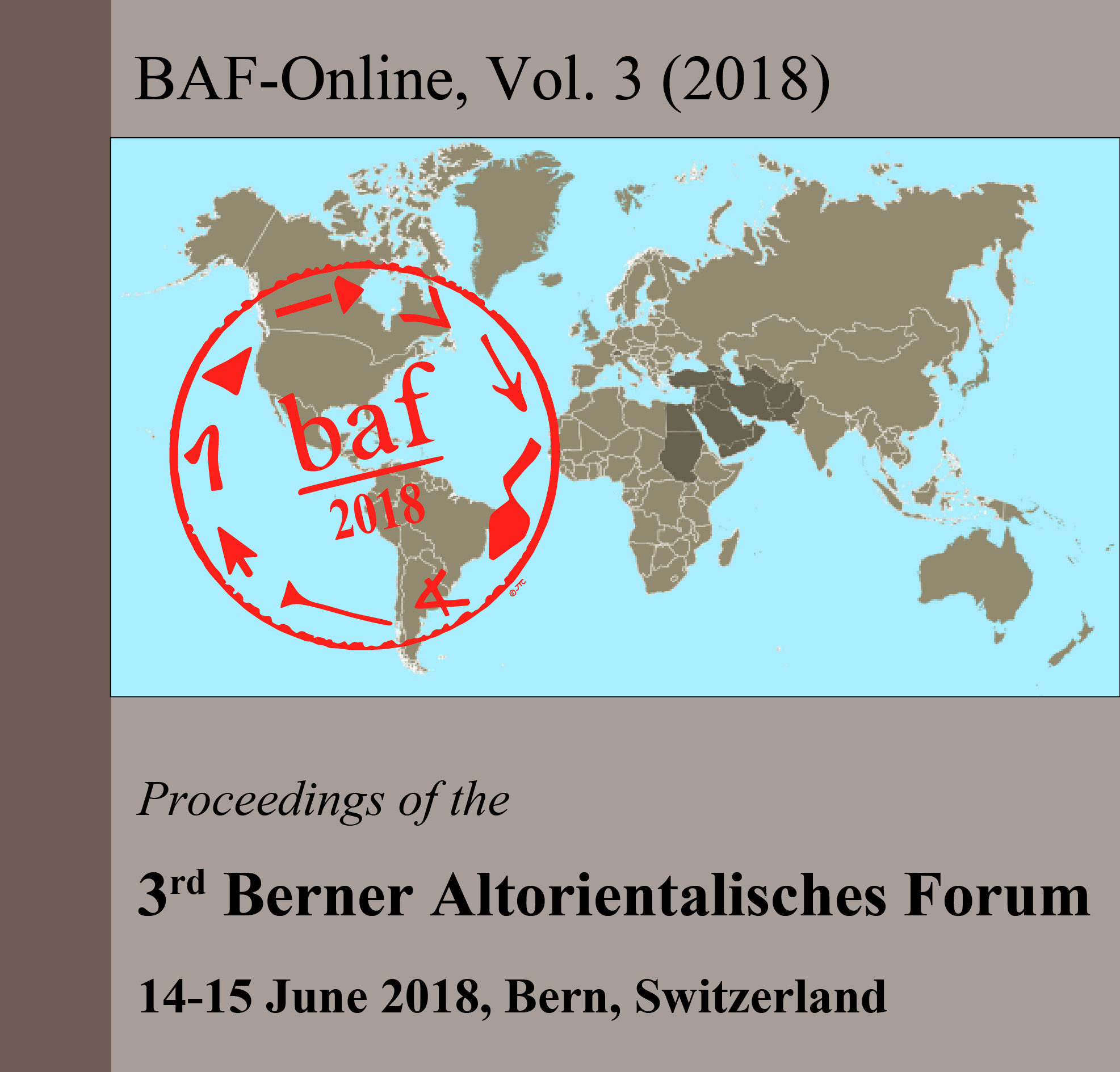Space and Narrativity in Menna's Tomb Chapel (Theban Tomb 69)
DOI:
https://doi.org/10.22012/baf.2018.11Abstract
Tackling the issue of „Space and narrativity in two-dimensional images of the Egyptian New Kingdom“, the tomb of Menna (Theban Tomb 69) will serve as an example. The tomb of Menna , who held offices in the administration of temple land and royal land, is situated in the non-royal necropolis of Sheikh Abd el-Qurna on the Theban West Bank. Based on architectural and stylistical criteria as well as prosopographical data, it has been dated to the reign of Amenhotep III. (ca. 1390–1353 B.C.).
The decorated tomb chapel is the part of the monument that was open to visitors and where the rituals for the deceased were performed as opposed to the burial chambers which were not intended to be re-opened after the burial except for the burial of the spouse or children of the deceased. In most cases they are undecorated.
References
M. Hartwig (ed.), The Tomb Chapel of Menna (TT 69). The Art, Culture, and Science of Painting in an Egyptian Tomb, ARCE Conservation Series 5 (Cairo 2013).
Published
Issue
Section
License

This work is licensed under a Creative Commons Attribution 4.0 International License.



